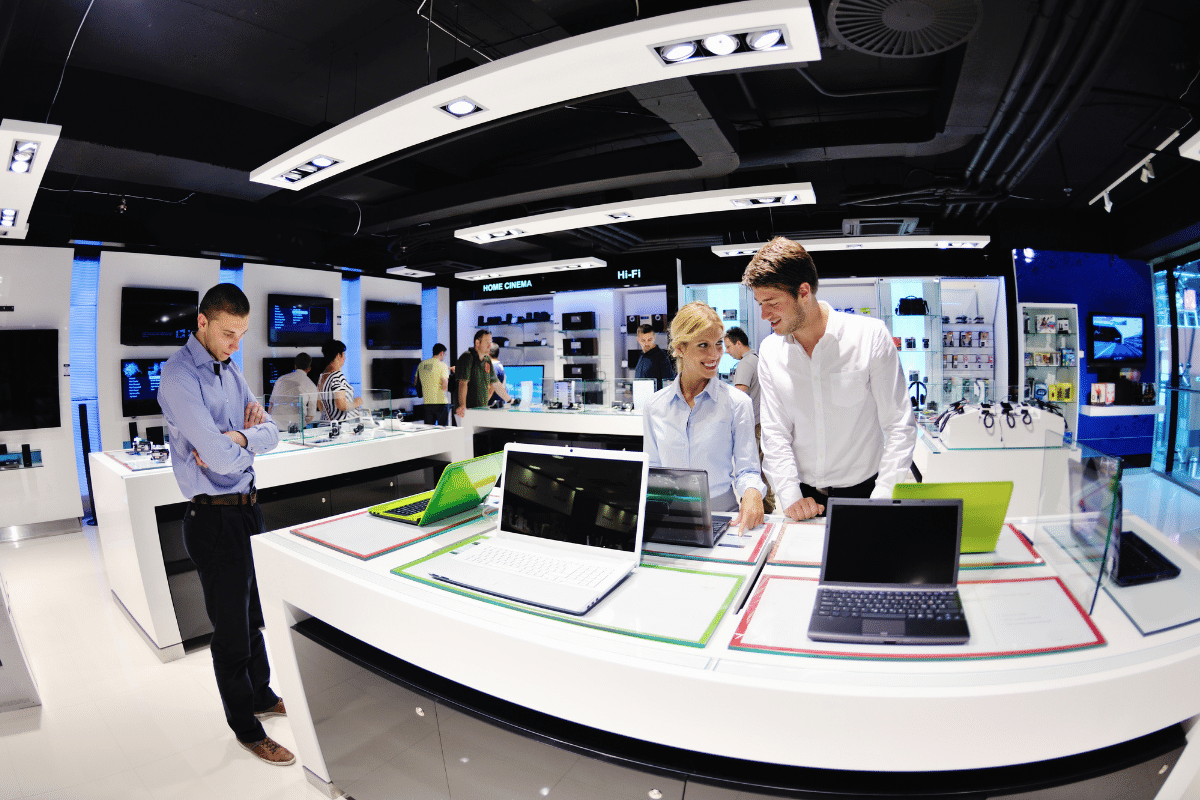Consumer electronic sensors are tiny devices that measure physical quantities such as temperature, pressure, motion, and acceleration. They are used in a wide range of consumer electronic devices, including smartphones, tablets, wearables, smart home devices, and gaming consoles Weeklysales says.
The consumer electronic sensors market is expected to grow significantly in the coming years, driven by the increasing demand for smart and connected devices. According to a report by Future Market Insights, the global consumer electronic sensors market is expected to reach US$ 106.5 billion by 2033, growing at a CAGR of 11.1% from 2023 to 2033.
Weeklysales, the top rated electronics wholesaler, analysis the consumer electronic sensor market and the factors driving its growth.
Factors Driving the Growth of the Consumer Electronic Sensors Market
There are several factors driving the growth of the consumer electronic sensors market, including:
- The increasing demand for smart and connected devices: Smart devices are becoming increasingly popular as they offer a variety of features and benefits, such as convenience, energy efficiency, and security. Consumer electronic sensors are essential components of smart devices, as they enable them to interact with their environment and perform various tasks.
- The growing adoption of wearables: Wearable devices, such as smartwatches and fitness trackers, are gaining traction among consumers. Wearable devices use a variety of sensors to track the user’s activity levels, heart rate, and other health parameters.
- The rising demand for gaming consoles: Gaming consoles are becoming increasingly sophisticated and immersive, thanks to the use of advanced sensors. Gaming consoles use sensors to track the player’s movements and provide feedback, which creates a more realistic and engaging gaming experience.
- The advancement of sensor technology: Consumer electronic sensors are becoming increasingly sophisticated and miniaturized, making them more suitable for use in a wider range of devices. Additionally, the cost of sensor technology is declining, which is making it more affordable for manufacturers to integrate sensors into their devices.
Challenges facing the market
Weeklysales observes that the following are the challenges facing consumer electronics sensor market:
- Consumers demand affordable devices, putting pressure on sensor manufacturers to produce cost-effective solutions without compromising quality.
- Miniaturization: As devices become smaller and more compact, sensors must be miniaturized while maintaining performance, which can be technically challenging.
- Power Consumption: Many consumer devices are portable and rely on batteries. Reducing power consumption while maintaining sensor accuracy is a constant challenge.
- Data Privacy: With the increasing use of sensors in consumer electronics, concerns about data privacy and security have risen. Manufacturers must address these concerns to gain consumer trust.
- Environmental Impact: Consumer electronics waste is a growing concern. Manufacturers need to focus on sustainability by using eco-friendly materials and processes.
- Global Supply Chain Disruptions: Events like the COVID-19 pandemic have highlighted the vulnerability of the global supply chain, affecting the availability of components for sensor manufacturing.
- Competition: The consumer electronics sensor market is highly competitive, and companies need to continually innovate to stay ahead of the competition.
Market Segmentation
The consumer electronic sensors market can be segmented by type, application, and region.
By Type
- Image sensors
- Temperature sensors
- Pressure sensors
- Motion sensors
- Acceleration sensors
- Others (humidity sensors, gas sensors, etc.)
By Application
- Smartphones
- Tablets
- Wearables
- Smart home devices
- Gaming consoles
- Others (laptops, desktops, etc.)
By Region
- North America
- Europe
- Asia Pacific
- Latin America
- Middle East and Africa
Key Market Trends
Some of the key trends driving the growth of the consumer electronic sensors market include:
- The increasing demand for high-resolution image sensors: High-resolution image sensors are in high demand for use in smartphones, cameras, and other devices. These sensors enable users to capture high-quality images and videos.
- The growing adoption of 3D sensors: 3D sensors are being used in a variety of consumer electronic devices, such as smartphones, tablets, and gaming consoles says, Weeklysales. 3D sensors enable devices to perceive depth, which allows for more immersive and interactive experiences.
- The rising demand for low-power sensors: Low-power sensors are becoming increasingly important for battery-powered devices, such as wearables and smart home devices. Low-power sensors enable devices to operate for longer periods of time on a single charge.
Major Market Players
Some of the major players in the consumer electronic sensors market include:
- Bosch
- NXP Semiconductors
- STMicroelectronics
- Sony
- TE Connectivity
- Honeywell
- Infineon Technologies
- Murata Manufacturing
- TDK Corporation
- Amphenol Corporation
- Analog Devices
Market Size and Share
The global consumer electronic sensors market was valued at US$ 32.8 billion in 2022. The market is expected to reach US$ 37.1 billion in 2023 and US$ 106.5 billion by 2033, growing at a CAGR of 11.1% from 2023 to 2033.
North America is the largest market for consumer electronic sensors, followed by Europe and Asia Pacific. North America accounted for a market share of 35% in 2022. Asia Pacific is the fastest-growing market, with a CAGR of 12.8% from 2023 to 2033.
Conclusion
The consumer electronic sensors market is expected to grow significantly in the coming years, driven by the increasing demand for smart and connected devices. The market is expected to be driven by the growing adoption of wearables, gaming consoles, and other devices that use sensors. Additionally, the advancement of sensor technology and the declining cost of sensors are expected to further boost the growth of the market.
Tags: consumer electronic sensors marketelectronic sensorsMarket Segmentationsmart devicesWeeklysales

